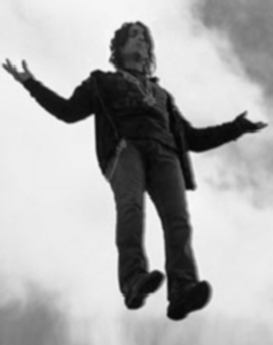via The Paris Review
January 2011 Archives
Viewing in Private: International Contemporary Art Fair Exclusively Online for one week only:
January 22-30, 2011
Registration required.
Susan Hiller at Tate Britain from 1st February 2011 - 15th May 2011
and
Susan Hiller: An Ongoing Investigation at Timothy Taylor Gallery
from 3rd February 2011 to 5th March 2011

The Shpilman Institute for
Photography invites scholars and independent researchers worldwide to submit
their applications for research on photography and on philosophy and
photography. Grants for individual and group research range from US$5,000 -
US$15,000. Deadlines for submissions = 1 March 2011. All details on
guidelines, themes, application process etc and be found on their website here and here.
From their website: "The
Shpilman Institute for Photography (The SIP) is a research institute whose
mission is to initiate and support innovative research and artistic production
that advance the understanding of photography and related media. Through its
grant programs, The SIP commissions and sponsors individual and group
research projects that inquire into photography's multiple meanings, functions
and significance. Placing an emphasis on philosophical inquiry, we support
scholarly papers and publications in print and online, conferences, symposia, and
other dissemination events. Art production and collaboration with museums and
other cultural spaces are also within the core activities of the SIP."
End of
Year Thoughts
"At the end of 2010 a few trends have become much clearer:
1. Books that use photographs are in a moment of
renaissance, the awaited pushback against the digital-ephemeral and a new
embrace of paper (reminiscent of painting's expansion as photography took
center stage). Made with digital tools, these books, usually from small
publishers, take risks that transcend the tired monographs with photographs
centered and celebrated on white pages.
2. The digital - iPad, Web, cellphone, etc. - are still
being utilized as exceedingly rudimentary display devices, showing a haphazard
mix of image/text/sound that is often less than the sum of its parts. There is
little sense of authenticity, of risk-taking, of graphics, of layout, of
typography, of playing with scale and texture. Instead, the slide-show with
sound has become the overused default - and it is hardly an advance over what
was done decades before.
The word "magazine" comes from the
Arabic/Hebrew word "mahsan," meaning warehouse, and it is as if we
have returned to a pre-magazine era in which we are once again presenting a
warehouse of media with little filtering or thought given to effective
presentation.
3. Photography of news continues to evolve into a
photography better done by amateurs than professionals, given that there are
many more amateurs with cameras walking around at all times. The stylized
imagery by professionals repeating the stereotypical news cliches is not
helpful as a way of promoting understanding. The province of the professional
in a journalistic context is very much the long-term essay, and many are
working both in the old-fashioned and very necessary role of witness and others
are trying to re-invent it to add complexity, nuance, and engage the reader in
different ways. What is needed more than ever are thoughtful editors/curators
who can help make sense of the visual overload.
4. We are entering a post-photographic age in the
transformative sense - one in which photography has to significantly evolve in
order to be useful. We are beginning to witness this transformation in a
broader way, as many worldwide both interrogate and discard photography's set
of older strategies while utilizing other media synergies to amplify the
photograph's communicative potentials.
No photograph is automatically credible anymore beyond a
local context, and this is both a challenge and wake-up call. Many
photographers (broadly defined) now seem to be stimulated by the new potentials
of the photograph and the discussion is finally beginning to evolve beyond the
repetitive and plaintive "end of photojournalism" to a sense of
multiple new beginnings in an increasingly open-source world. The next step
will have to be a more vigorous search for meaning, as well as for
collaboration".
Text by Fred Richten
